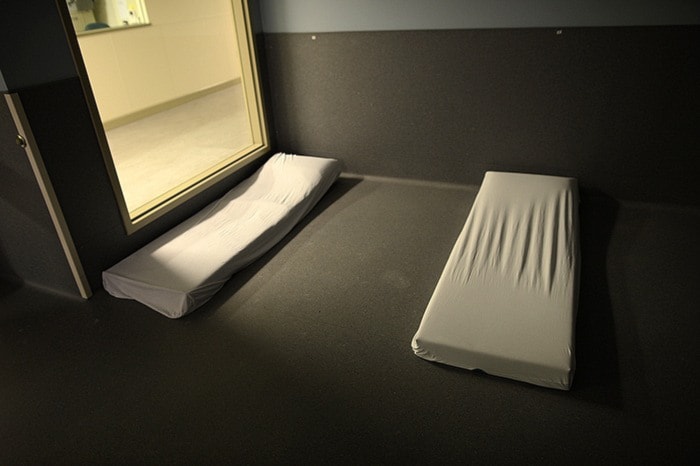Whenever the woman with mental health problems got high, she’d tear off her clothes and dance naked in Surrey’s streets.
Every time, police responded, got her dressed, and took her to the holding cells at the RCMP detachment to sleep it off.
The next night, it would happen again.
It happened with such frequency, the issue came to the attention of then-councillor Dianne Watts, who was the chair of the city’s Public Safety Committee.
Watts was deeply concerned on two main levels.
Firstly, she said at the time, people who are sick don’t belong in jail.
Secondly, Watts  was bothered about the tremendous use of police resources to handle what was essentially a health issue.
was bothered about the tremendous use of police resources to handle what was essentially a health issue.
Watts spoke with others, such as addictions expert Michael Wilson, and hatched a plan for a sobering centre, where people could come off drugs and/or alcohol in a more clinical environment.
Surrey could provide the land, B.C. Housing the structure, and Fraser Health Authority the staff.
It took almost a decade to bring the idea to reality, but by last September, the Quibble Creek Sobering and Assessment Centre was up and running at 13670 94A Avenue.
Those who are brought to the 25-bed sobering centre are too drunk for shelters and not sick enough for hospitals.
Even though it’s been operational for eight months, there’s been a slow uptake.
On a recent “Welfare Wednesday,” (the day of the month when low-income clients receive their social assistance cheques and often spend money on illicit substances), there were no clients at the 25-bed facility.
Busier days see about nine.
Kevin Letourneau (below), manager of Quibble Creek and nearby Creekside Detox Withdrawal Management Centre, isn’t surprised at the slow start.
It took a similar facility in Victoria a year to begin filling up on a regular basis.
When clients arrive at Quibble Creek, they are medically assessed and asked to change into pajamas.
The only people who might be turned away are those who are combative or are on drugs where they won’t be able to sit still, such as crystal methamphetamine.
Those who are detoxing from benzodiazepines or alcohol may be referred to the hospital for their own safety. Coming off those drugs cold turkey can be fatal.
However the vast majority of those who are drunk or high are welcome to stay, for a maximum of 23 hours. They arrive in equal numbers from the hospital, police, and as walk-ins.
There’s nothing plush about the centre’s surroundings. It has an institutional, sterile feel, with unadorned walls, security cameras, and solid metal chairs in the common kitchen, and overnight beds are on the floor (for clients’ safety).
The only other sobering centre remotely close to this is one in Victoria, the rest throughout the province are either much smaller or run on a different model.
What clients find here is something they won’t likely find anywhere else in the health care system – a respectful and non-judgmental environment where they can reflect on what might be the most important decision of their life: to seek recovery.
“It’s a very respectful atmosphere, and that’s a deliberate intent,” Letourneau said. “Prior to the sobering centre, a lot of people would have some pretty horrible experiences, depending on where they are, often marginalized, stigmatized... there’s a lot of shame that goes along with that.”
And the proof of its success is in the numbers.
About one in 10 of the people walking through the doors at Quibble Creek will ask for a bed at Creekside Detox, taking the next step towards recovery.
Staff at Quibble Creek have seen former clients go on to the nearby Phoenix Drug and Alcohol Recovery and Education Society, where they transition into full abstinence from drugs and/or alcohol.
Letourneau said appropriate first contact is critical.
“The number-one predictor of whether somebody is going to get on that recovery path is contact with a health care professional,” Letourneau said. “Obviously, more than that, it is being treated with respect and dignity and to be shown some options.”
When the substances are out of their system, the 30 to 50 per cent of clients with mental health problems can be properly medicated.
Once that happens, Letourneau said, what seemed to be an insurmountable task in stabilizing the patient often becomes completely attainable.
And that means one less person drawing on police and medical resources.
Even if it was humane, addictions experts say the just-lock-’em-up approach simply doesn’t work.
“If the outcomes were good, we wouldn’t have to have any substance use services in the community, would we?” asked Sherry Mumford, director of mental health and addictions for Fraser Health.
“Because most people with substance uses or concurrent disorders (both mental health and addiction) have an extensive history with the criminal justice system one way or another. If that model worked, I’d be out of a job.”
